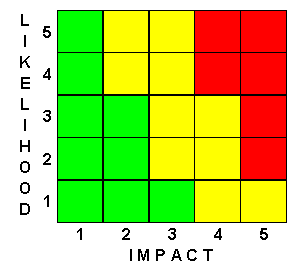Welcome to Mining Man’s weekly update with a topic for you to use in your safe behavior observations. We give you some key areas to focus on in your discussions, and some useful sample dialogue.
For this week’s topic we are going back to one of the basics of on-the-job safety. We are going to be checking on, and discussing, the risk assessment or hazard identification that was done by the people on the job, before they started the job.
Check Site Requirements
The first thing we will be checking for is compliance with the site requirements for prework risk assessments or hazard identification. So make sure you are clear on the types of assessment required, and what form of recording (i.e. check sheets, forms, pocket books, tags) should be completed for different types of jobs. Depending on your site, and the size and type of job, the requirements may include:
informal discussions about hazards (Take-5, Take-2)
filling out simple check sheets which prompt for hazards areas (send me an email if you’d like a copy of Mining Man’s hazard prompt sheet)
filling out a more detailed task analysis sheet (send me an email if you’d like a copy of Mining Man’s task analysis sheet)
reviewing the contents of a formal risk assessment for the job
reviewing the assessments done on previous shifts to refresh and identify any changes
When we arrive at the job we are going to observe, we want to first make an assessment of what type of hazard identification we think should have been completed. We can form our own judgement then engage the people on the job:
“Hi guys, I’m doing my weekly safety observation, and I’d like to ask what sort of hazard or risk assessment was done on this job before you started?”
Positive Feedback
All going well, they should be able to tell you what type of assessment was required for their job, and show you the results of what they did.
We will give positive feedback when the site requirements have been adhered to, and even more so if they have gone above and beyond the site requirements:
“That’s great, and it looks like you’ve covered everything there. Plus when you do the extra step which you did and record all the controls in addition to the hazards, you make it much safer for yourselves, and for anyone who might take over the job. It really shows me you’ve got your mind on the job, thanks.”
Improvement Feedback
However, what if they have no written record of a hazard identification process from the start of the job? First we should at least be asking the key questions that we always ask when we arrive at ANY job:
“What hazards have you identified on this job?”
“How could someone get hurt?”
“What are you doing to prevent hazards turning into injuries?”
Assuming their knowledge of the hazards is ok, the final step is to address the lack of a written record (if in fact the type of job should have required them to write something down):
“I appreciate that you guys are working safely, and you seem to be aware of the hazards, but we do have site requirements for hazard assessment and recording before each job. Why do you think it’s important to write down the hazards and controls that you’ve thought of?”
Their answers, and the ensuing discussion, should cover the following reasons to make written records:
Makes sure you’ve taken the right amount of time to think about the job
Makes sure you’ve covered all the prompts on the sheet in case there’s any hazard you didn’t think of
Provides written backup for what was done in case there is an accident
Allows individual workers and the company to physically demonstrate their safety attitude and actions to third parties
Can be used to develop a procedure for the job, or can be handed over to the next shift
Adequacy of Hazard Assessment
In addition to checking for compliance with site requirements, it is important to also discuss the adequacy of the hazard assessment that has been completed. Here you can use your site hazard checklist (if available), your own experience, or your observations of the job as it is taking place.
In this part of the observation we are looking to discuss two main areas:
Hazards that were identified before the job, and the controls that were put in place to manage them.
Any hazards that appear to not have been identified or considered, and why/how these did not get considered.
Close Out
To close out the safety observation, the discussion should touch on the importance of stopping, thinking and talking about hazards and risks before starting every job:
“Ok thanks for your time, remember how important it is to stop and think about the hazards before starting every job. It’s at the start of the job where we have the best chance to put controls in place that can stop people get hurting during or after the job.”
Good luck in your safety observations this week, remember that the discussions and interactions are the most important part of the observation process.
– Jamie Ross
Mining Man – Safety, leadership and technical tips for the mining industry.
Sign up now with just your name and email address to get Mining Man’s weekly safety topic sent straight to your inbox every Monday morning.
This article was published by: Mining Man
Visit the original article here



